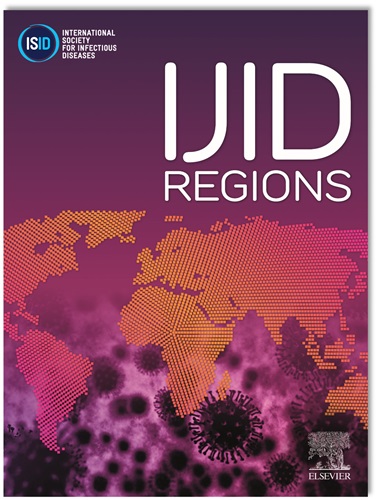Impacts of population ageing on bloodstream infection epidemiology and outcomes: A machine learning and statistical modelling study
IF 4.3
2区 医学
Q1 INFECTIOUS DISEASES
引用次数: 0
Abstract
Objectives
To investigate the effect of population ageing on pathogen distribution and clinical outcomes in bloodstream infections (BSIs).
Methods
We analysed 37,100 adult patients with BSI from two university hospitals in South Korea (2006-2023) and used statistical and machine learning (ML) approaches to assess temporal trends, age-related changes in causative pathogens, and 30-day mortality.
Results
The mean age of patients was 64.6 years (standard deviation 15.0), with 55.7% aged ≥65. Advanced age was independently associated with a high 30-day mortality via a shift in pathogen distribution. ML models predicted an increasing proportion of BSIs caused by Escherichia coli, Enterococcus faecalis, coagulase-negative staphylococci and fungi with ageing and a decreasing proportion of those caused by Staphylococcus aureus, streptococci, Pseudomonas aeruginosa and Acinetobacter spp. Fungaemia contributed to the highest adjusted mortality rate. The advantage of E. coli-BSI being associated with low 30-day mortality was diminished in strains not susceptible to third-generation cephalosporins.
Conclusion
Population ageing is associated with shifts in BSI epidemiology and outcomes. Our findings suggest that tailored antimicrobial stewardship and infection management are necessary to address the burden of BSIs in ageing populations.
人口老龄化对血流感染流行病学和结果的影响:机器学习和统计建模研究。
目的:探讨人口老龄化对血流感染病原菌分布及临床转阴的影响。方法:我们分析了来自韩国两所大学医院的37,100名成年BSI患者(2006-2023年),并使用统计学和机器学习(ML)方法来评估时间趋势、致病病原体的年龄相关变化和30天死亡率。结果:患者平均年龄64.6岁(SD 15.0),年龄≥65岁占55.7%。高龄通过病原体分布的变化与较高的30天死亡率独立相关。ML模型预测,随着年龄的增长,大肠杆菌、粪肠球菌、凝固酶阴性葡萄球菌和真菌引起的bsi比例上升,金黄色葡萄球菌、链球菌、铜绿假单胞菌和不动杆菌引起的bsi比例下降,真菌血症导致的调整死亡率最高。大肠杆菌bsi与低30天死亡率相关的优势在对第三代头孢菌素不敏感的菌株中减弱。结论:人口老龄化与BSI流行病学和预后的变化有关。我们的研究结果表明,量身定制的抗菌剂管理和感染管理对于解决老年人群中bsi的负担是必要的。
本文章由计算机程序翻译,如有差异,请以英文原文为准。
求助全文
约1分钟内获得全文
求助全文
来源期刊
CiteScore
18.90
自引率
2.40%
发文量
1020
审稿时长
30 days
期刊介绍:
International Journal of Infectious Diseases (IJID)
Publisher: International Society for Infectious Diseases
Publication Frequency: Monthly
Type: Peer-reviewed, Open Access
Scope:
Publishes original clinical and laboratory-based research.
Reports clinical trials, reviews, and some case reports.
Focuses on epidemiology, clinical diagnosis, treatment, and control of infectious diseases.
Emphasizes diseases common in under-resourced countries.

 求助内容:
求助内容: 应助结果提醒方式:
应助结果提醒方式:


